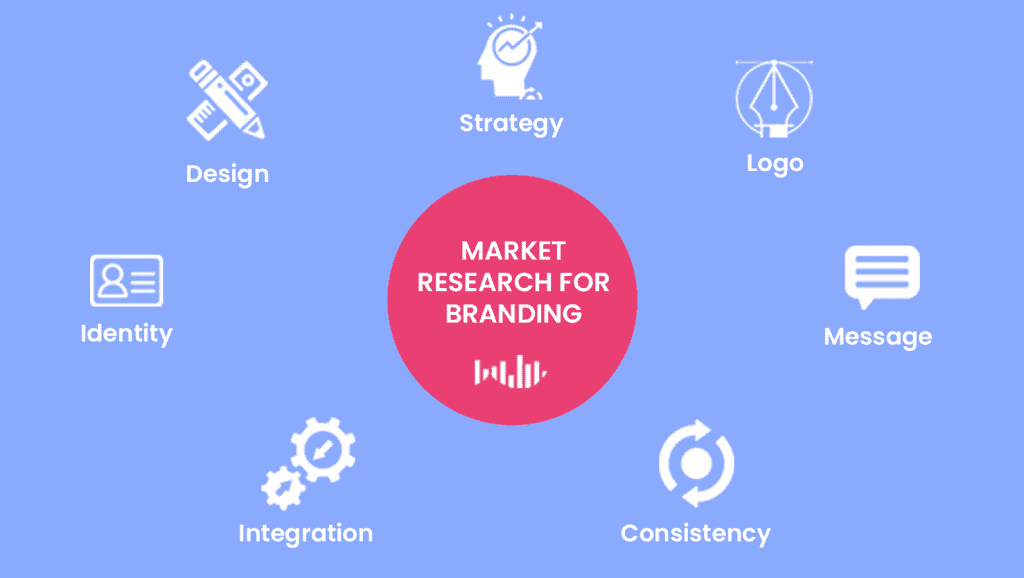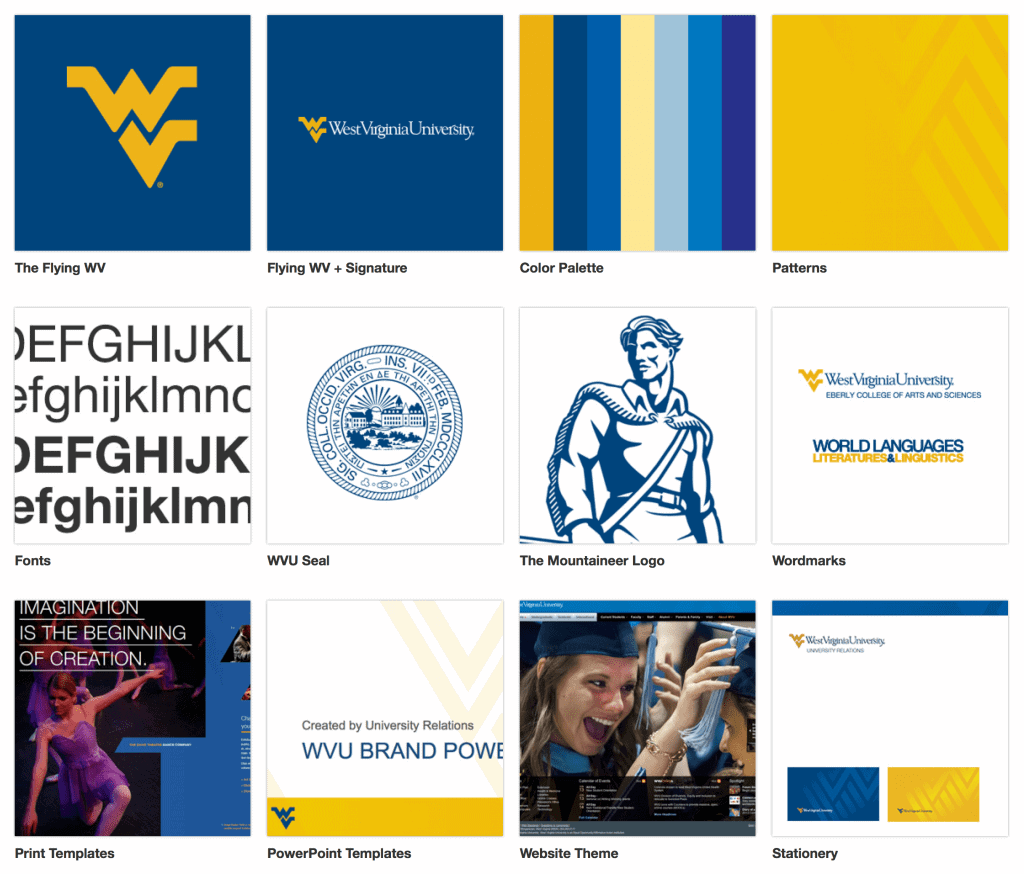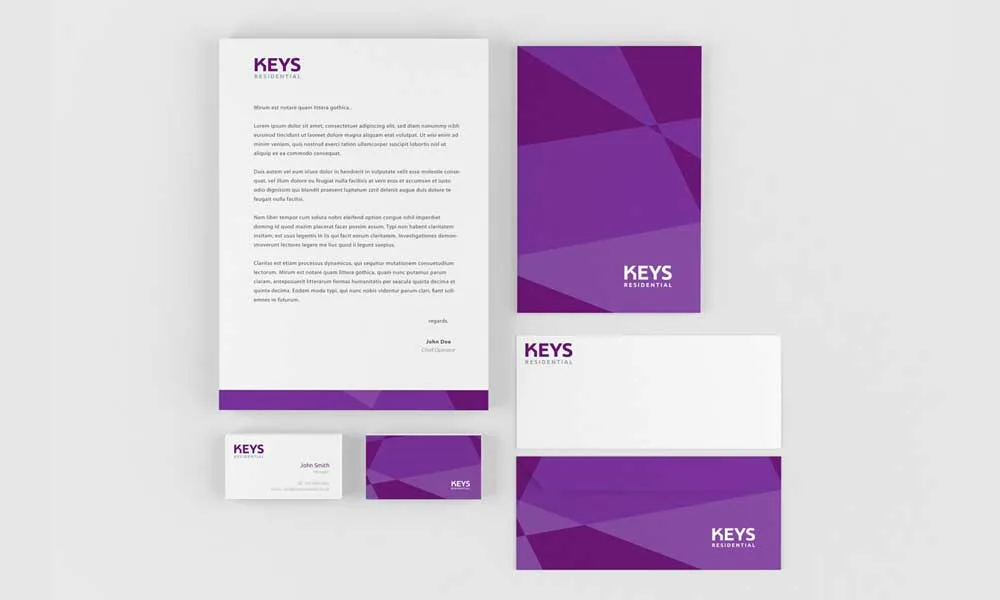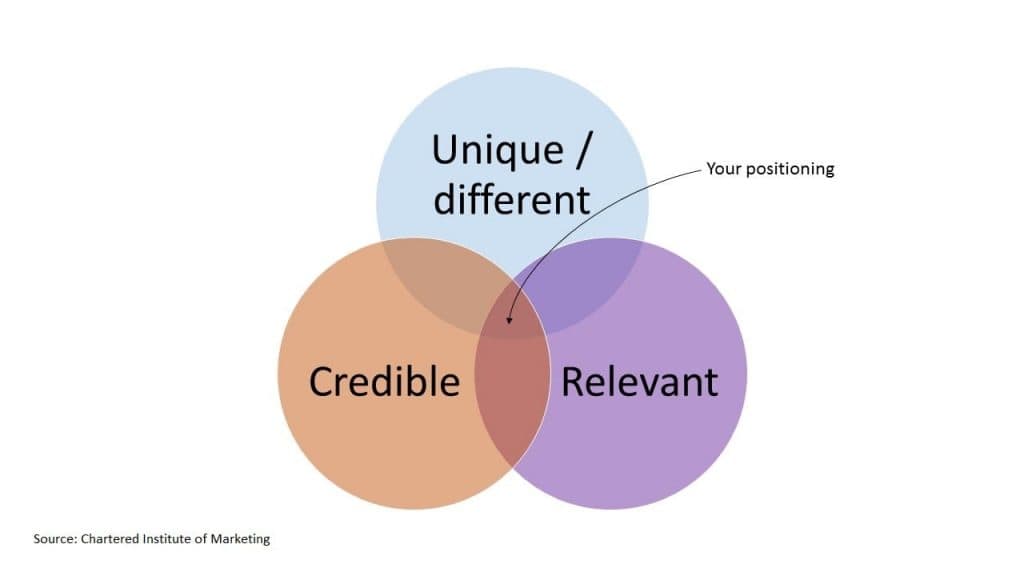The Ultimate Guide to Mastering the Branding Process
Branding is a crucial aspect of any business, as it serves as a unique identity that separates it from its competitors. However, the process of developing a brand strategy can be a daunting task, especially for new businesses. In this article, we will dive into the nitty-gritty of the branding process, from understanding the fundamentals to creating a brand strategy that resonates with your audience. So, whether you're starting a new business or rebranding an existing one, buckle up and get ready to master the branding process.
Table of Contents
The Basics of Branding

Are you ready to dive deeper into the intricate branding process? First up on our journey: the basics of branding. You may ask, “What is branding?” And why is it so crucial to the success of a business?
Branding creates an emotional and psychological connection between a product, service, or organisation and its target audience. The intangible but mighty force separates your business from its competitors and allows it to stand out in today's overcrowded marketplace.
Now, onto the main elements of branding. These are not your run-of-the-mill components but the backbone of your brand's identity, making it memorable and recognisable. Let's break them down one by one, shall we?
First, we have the logo, which is the visual representation of your brand. It's the face of your business that consumers will associate with and use to identify your brand in a sea of competitors. According to a study by the University of Loyola, an engaging logo that aligns with your brand's personality can enhance brand recognition by up to 80%.
Next, we encounter the colour scheme – the palette of hues used throughout your branding materials that elicit emotions and feelings in your audience. Colours can profoundly affect the subconscious, as about 90% of snap judgments about products have centred upon their colour alone.
Then, there's typography, encompassing your brand's messaging's font, size, and style. Typography is another element that influences how your brand communicates to its audience. Unique and consistent typography can bolster brand perception, as 72% of users surveyed by Adobe said that quality design influences their impression of a brand.
Finally, there's messaging – the voice and tone of your brand that reflect its personality and mission. A successful brand messaging strategy communicates the core value of a brand to its target audience. 91% of consumers stated in a survey that they were more likely to purchase from a brand with an authentic personality that aligned with their values.
Now, let's clear up a common misconception. What's the difference between a brand and a brand identity? A brand is an overall impression that a business portrays. In contrast, brand identity refers to the visual assets that comprise that impression, such as the logo, colour scheme, typography, and messaging. Your brand is who you are, and your identity is how you show yourself.
Conducting Market Research

First on the agenda is the importance of understanding your target audience. The more you know about your customers' wants, needs, and preferences, the better your chances are of delivering a product or service that meets their expectations. Without this knowledge, you might waste valuable resources on ineffective campaigns that don't generate results. Target audience research will allow you to identify your most profitable customer demographics and create targeted messaging, offers, and promotions.
Next, we'll explore the market research methods for gathering data on your target audience. These can include surveys, focus groups, and competitive analysis.
- Surveys: One of the most common ways to conduct market research is through surveys. Surveys can be distributed via email, social media, a website, or in person. They can be qualitative or quantitative and have specific questions tailored to your business needs. Surveys provide valuable information about your audience's demographic, psychographic, and behavioural characteristics.
- Focus Groups: Focus groups bring together a small number of individuals who fit your target audience profile. This group will discuss your product or service, and their opinions will be recorded. This method can be insightful in providing detailed feedback on product features, design or messaging.
- Competitive Analysis: Competitive analysis involves researching competitors' strengths, weaknesses, and marketing strategies. This type of market research can help you identify gaps in the market and create a unique selling proposition for your product or service.
Finally, let's talk about analysing and interpreting your research data. Collecting data is one thing, but knowing how to understand it is more important. When analysing data, you'll want to look for patterns and trends in your audience's behaviour or attitudes. Interpreting data will help you identify actionable insights that you can use to optimise your marketing campaigns, fine-tune your product features, and offer promotions that align with consumer demand.
Defining Your Brand Identity

Creating a distinct brand identity is essential to attract your target audience and staying ahead of the game. Defining your brand identity involves:
- Developing a unique value proposition.
- Building a brand personality.
- Crafting a brand voice and messaging that resonates with your audience. Categorising
Your brand will help to differentiate it in the marketplace. So let's delve into each of these components.
First is developing a unique value proposition. This statement defines the specific benefits and value your brand provides to your target audience. Your value proposition should differentiate your brand from others in the marketplace and align with your target customers' needs and desires. A compelling value proposition can significantly impact your brand's success.
Next, let's talk about building your brand personality. A brand personality is a set of human characteristics and traits associated with your brand. This personality should match your target audience's preferences and aspirations, such as sophisticated, playful, or adventurous. Once you have defined your brand personality, ensure every branding material portrays it consistently to build strong emotional connections with your customers.
Now let's discuss defining your brand voice and messaging. Your brand voice is the tone and style in which your brand communicates with your audience. It should be consistent with your brand personality traits and resonate with your target customers' emotions. Messaging is what your brand communicates through various channels, such as social media, email marketing, and advertising. It's crucial to differentiate your messaging to stand out in the crowded marketplace.
Finally, we have categorising your brand. Categorising your brand helps it to differentiate it from competitors and signal your brand's core values to your target audience. This could include labelling your brand as luxurious, affordable, eco-friendly or innovative. Standardising your brand category can also help craft unique branding materials and campaigns that match the audience's perceptions.
Designing Your Brand Identity

First up is creating a logo that aligns with your brand. A logo reflects your brand's personality and tells a story without saying anything. When designing a logo, please keep it simple, memorable, and timeless. Your logo should be consistent with your brand's personality and values. Take the time to research your target audience preferences and competitors to create a unique design that will stand out from the crowd.
Next, a colour scheme is vital to creating a solid brand identity. Colours evoke emotions, and you want to ensure that the feelings your brand seeks to match the colours you choose. For instance, red is often associated with passion, energy, and excitement, yellow with joy and optimism, and blue with trust and serenity. Choose a colour scheme that sets the right tone for your brand and resonates well with your target audience.
Selecting typography that complements your brand's personality is another critical design element. Typography is a visual representation of the tone and nature of your brand. It should be legible, easy to read, and align with your brand's personality. For example, a high-end brand may use elegant and sophisticated typefaces, while a playful brand may choose more informal and casual fonts. Ensure the typography aligns with your brand's identity to create a cohesive visual experience across all platforms.
Finally, designing branded templates and patterns can help your brand stand out consistently across all your communications. It could be patterns and textures on your website or social media, graphics templates, branded images, or product packaging. Creating branded templates and patterns will enable you to maintain a consistent brand identity and provide a professional look.
Creating a Brand Strategy

Creating a brand strategy is essential to any business that wants to establish a strong presence in the market. A comprehensive brand strategy defines and outlines the mission and vision of the company, identifies the target audience's demographics and psychographics, and crafts a positioning statement, a brand promise, and a brand story. Today, we'll dive into these essential elements of creating a successful brand strategy to attract new customers, retain existing ones, and drive business growth.
First up is outlining your brand's mission and vision. Your brand's mission statement should embody why your business exists and describe your brand's purpose. It should be meaningful, concise, and inspiring to your customers. Your vision statement, on the other hand, should define where you see your brand in the future. It should be ambitious and specific and convey a clear direction as you build your brand.
Defining your target audience's demographics and psychographics is critical to creating a brand strategy. Consider your target audience's age, gender, income, occupation, lifestyle, and values to craft a target audience persona. Next, consider psychographics – this refers to factors like personalities, attitudes, interests, and lifestyles. By developing a clear picture of your target audience, you can create products or services that cater to their needs and preferences and craft a messaging strategy that speaks to their interests, values, and concerns.
Crafting a positioning statement is another crucial step in developing your brand strategy. Your positioning statement should define how you want your brand to be perceived by your target audience. It should differentiate your brand from your competitors, highlight your unique value proposition, and communicate what you do better than anyone else. A solid positioning statement helps set the tone for sharing about your brand in all your marketing efforts.
Crafting a brand promise is another crucial element of your brand strategy. Your brand promise is a statement that outlines what customers can expect from your brand. It should describe what you deliver to customers consistently and how it's helping them to solve a problem or meet a need. Communicating your brand promise to your customers will help build trust, brand loyalty, and word-of-mouth marketing.
Finally, crafting a brand story is critical to your brand strategy. Your brand story is a compelling narrative communicating your brand's value proposition, mission, and vision. It humanises your brand and allows customers to connect with you on an emotional level. A strong brand story can help you differentiate your brand from competitors and create a loyal following.
Implementing Your Brand Strategy

Once you have a comprehensive brand strategy, it's time to implement it to create a memorable and effective brand. Implementing your brand strategy requires consistency across all marketing materials, creating a style guide, developing brand messaging for different channels, and creating a launch plan. Let's dive into these essential elements of implementing your brand strategy to ensure your brand stands out and resonates with your target audience.
First up is consistency across all marketing materials. Consistency is critical to creating a solid brand identity. Ensure that your logo, brand colours, typography, and other elements are used consistently across all your marketing materials. This includes your website, social media, email marketing, print materials, and any other marketing channels you use. Consistency builds trust and helps customers remember your brand.
Creating a style guide is the next essential step in implementing your brand strategy. A style guide is a document that outlines the guidelines for the usage of the brand elements across all marketing channels. It includes procedures and rules for logo usage, typography, colour palettes, imagery, and brand voice. By creating a style guide, you can maintain consistency and ensure your brand is consistently represented accurately across all your marketing materials.
Developing your brand messaging for different channels is the next step. Other channels require different messaging strategies to engage with your target audience effectively. For instance, social media channels require a more conversational tone and informal language, while email marketing requires a more formal tone and targeted messaging. By developing different messaging strategies for other channels, you can ensure that your brand resonates with your target audience regardless of their marketing channel.
Finally, creating a launch plan is essential in implementing your brand strategy. A launch plan is a document that outlines the plan for implementing your brand strategy. It includes timelines, milestones, responsibilities, and objectives for different stages of brand implementation. A launch plan allows you to establish a successful brand launch and ensures that everyone involved is on the same page.
Measuring Your Brand Success

Building a strong brand is essential to the success of any business, big or small. But how do you know if your brand is successful? Measuring your brand success is critical to understanding how effectively your brand resonates with your target audience and whether it is driving business growth. Let's discuss the metrics you can use to measure brand success, why it's essential to regularly analyse and monitor your brand success and how to drive improvements based on data analysis.
The first step in measuring brand success is defining the metrics that matter for your business. This includes brand awareness, customer loyalty, and market share. Let's break these metrics down to understand each better.
- Brand Awareness: This metric measures the level of familiarity that people have with your brand. You can measure brand awareness through surveys, social media analytics, website traffic, and search engine results. The higher the brand awareness, the more likely customers will choose your brand.
- Customer Loyalty: This metric measures your customers' loyalty towards your brand. It is essential for retaining customers and driving repeat business. You can measure customer loyalty through repeat purchases, customer feedback, and engagement across different channels, such as social media and email marketing.
- Market Share: Market share measures your brand's market share compared to your competitors. A higher market share indicates that your brand is doing better than your competitors in sales and more customers are choosing your brand over others.
Now that we know the key metrics for measuring brand success let's discuss why it's critical to analyse and monitor your brand success regularly. Regular brand monitoring helps you identify trends and patterns that inform your marketing strategy. You can use tools like Google Analytics, social media analytics, and customer feedback to track your brand success metrics. Regular monitoring allows you to identify improvement opportunities, track your marketing campaign's effectiveness, and adjust your strategy accordingly.
Finally, it's vital to drive improvements based on insights from data analysis. Regular monitoring will give you a wealth of data to inform your marketing strategy. Use the insights from your data analysis to adjust your messaging, targeting, and promotional strategy. For example, if your brand awareness could be higher, you should focus on running more targeted ads, branding campaigns, or influencer partnerships. Using data insights to drive improvements, you can continually refine your brand strategy and achieve tremendous brand success.
Conclusion
Developing a successful brand strategy that resonates with your audience requires careful planning and understanding of the branding process. Following the steps outlined in this article will give you the knowledge and tools to create a powerful and memorable brand that reflects your business's unique identity. Remember, the branding process is not a one-time event; it requires ongoing monitoring and adjustments to ensure the brand's longevity and success.
